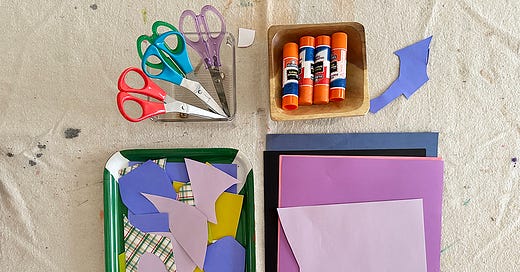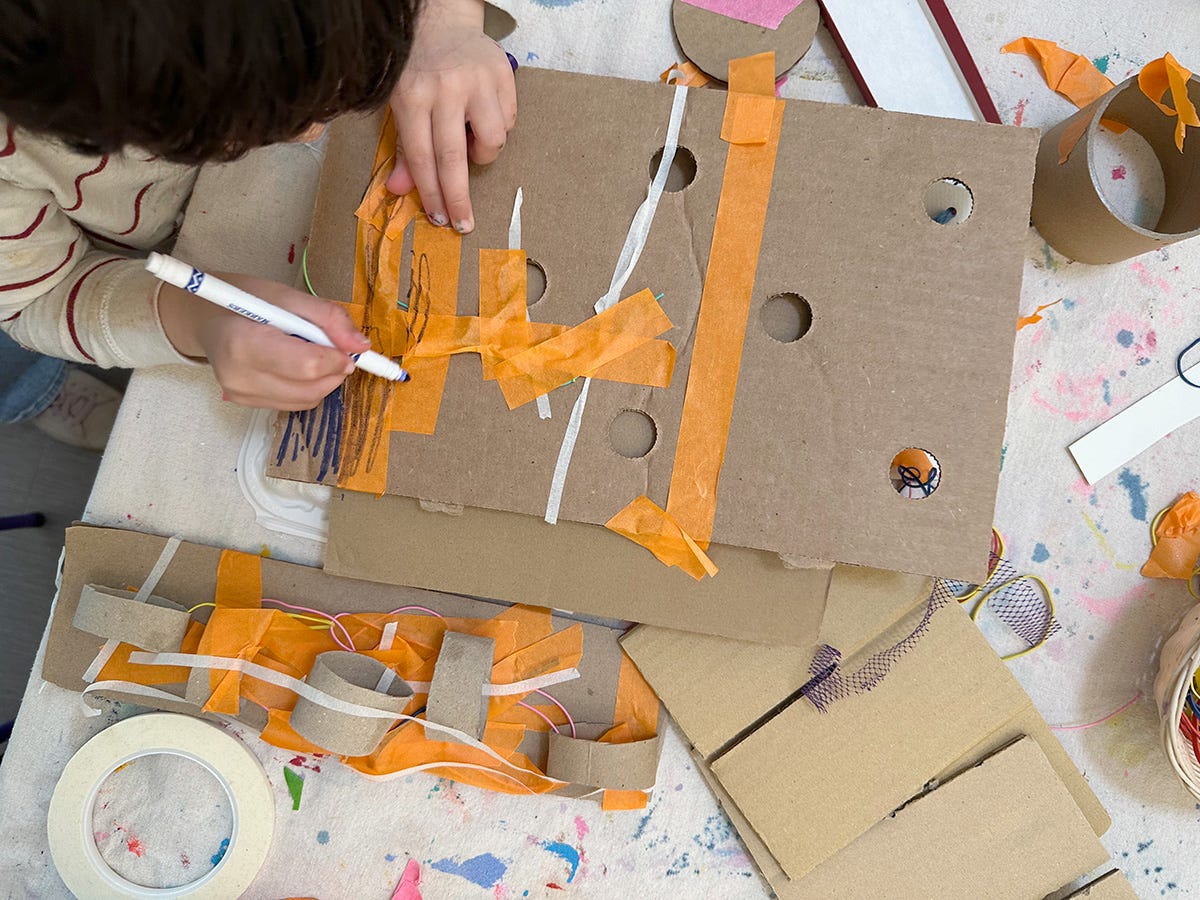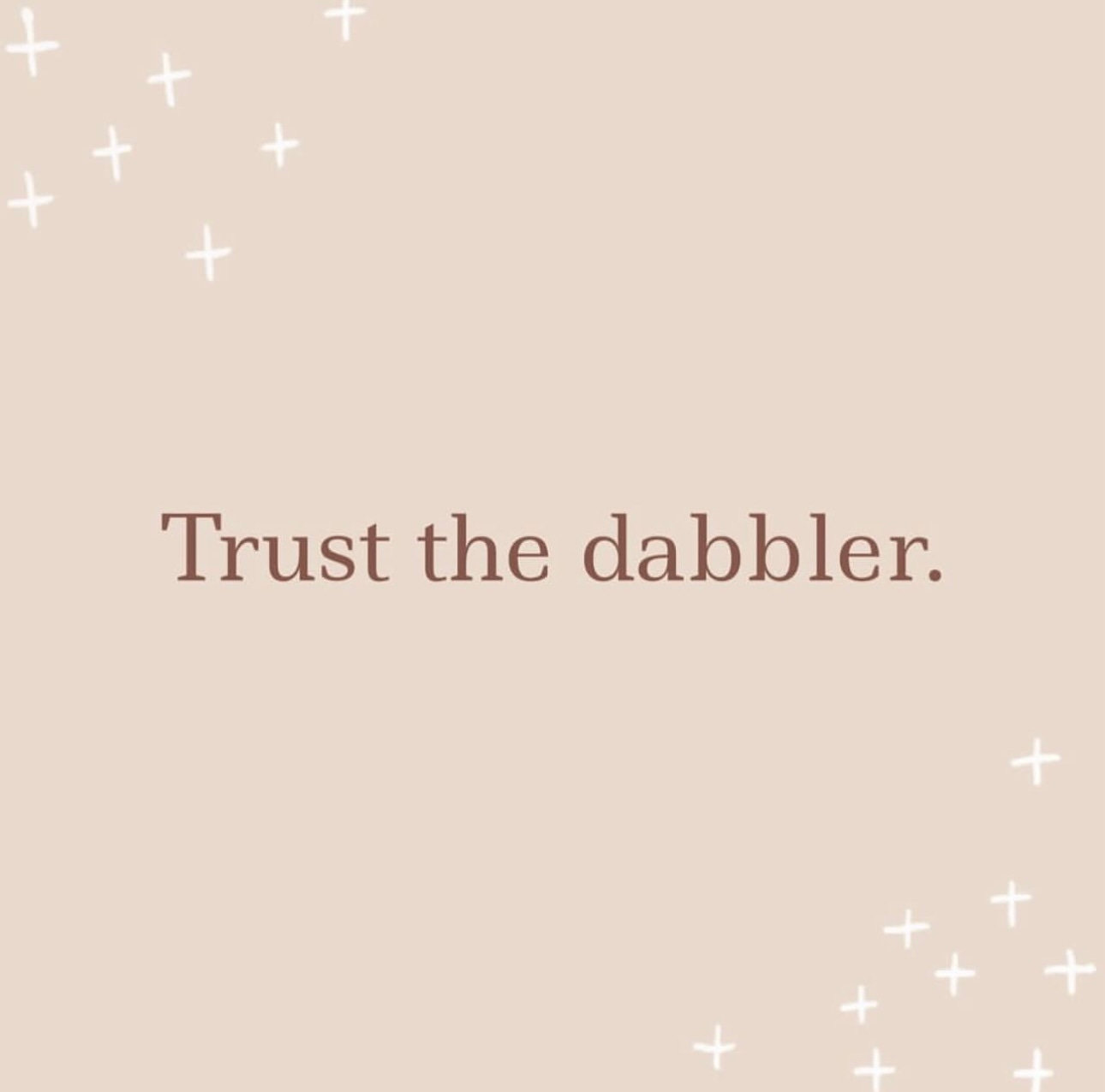One of the most common questions we hear is, How do you teach creativity?
Our answer? You don’t.
You just have to make space for it — and then set it up and see what happens.
This phrase has become a mantra for us. It’s the way we approach creativity, whether we’re designing explorations of materials for children, leading a professional learning session, or tinkering with our own artistic practices. Instead of controlling the outcome, we focus on playfully setting the conditions for possibility.
And here’s the magic — when you step back, creativity steps forward.
But how do you move from a craft or coloring page to an authentic art-making experience? Keep reading!
The Power of an Invitation
Imagine this: a table covered in strips of colorful paper, a roll of tape, and a single prompt: What can you build? No instructions, no expected result—just an open invitation. Some children might collaborate to make an elaborate sculpture. Others might start rolling the paper into a tiny stack of bracelets. And yet another might enjoy the sound of crinkling paper in their hands or watching other children work.
Or maybe it’s a selection of cardboard and other recyclables arranged playfully on a table, just waiting to be transformed. The children are not waiting for adults to decide for them how they will spend their time or what they will do with the materials. Instead, they are looking closely, making connections, trying and iterating, sometimes frustrated but joyfully in flow. This u
This is where creativity thrives. Children get plenty of opportunities to learn how to follow directions and move through an adult’s step-by-step agenda. In fact, research shows that our jam-packed schedules filled with extracurriculars, overuse of screen time, and the rigid and often misaligned learning objectives and emphasis on standardization and academic achievement that drive a typical child’s school day are all contributing to the loss of creativity and innovation in children and our culture. But there is hope! In the open-ended nature of an invitation, the children’s vision is made real. When we set it up and see what happens, we allow for personal expression, experimentation, and most importantly, play.
Why This Works (And Why It’s Hard to Trust at First)
It’s natural to want to guide kids (or even ourselves) toward success. “Here, let me show you how to do it” can feel helpful, but often, it subtly tells kids that their way isn’t good enough, or that we don’t trust their abilities. When we loosen our grip and let curiosity lead, we tap into something deeper: a sense of agency — the feeling that “I have ideas, and they matter.”
In any learning space, this approach aligns beautifully with what we know about how children make meaning. In professional settings, it pushes adults to move past the fear of failure and into playful exploration. And honestly? It’s a much more joyful way to engage with the world.
Try It Yourself
Next time you find yourself reaching for structure, try a little creative experiment:
Instead of giving step-by-step instructions, set out materials and pose a question.
If a child tries something unexpected, approach with curiosity instead of judgment. Let their innovation inspire your next moves.
Let yourself create something without a clear plan — just start and see where it leads. How does it feel to create in a playful way?
When we let go of control, we make room for wonder. And wonder? That’s where the best ideas begin.
Set it up. See what happens. Then, stand back and watch creativity unfold.
Trust the Dabbler
When we begin to open up our creative practice to let children choose how they are going to play with and experience the materials we set out for them, there are inevitably going to be some children who choose not to engage at all. Or perhaps they will just dabble, participating for a minute but then moving to something more familiar or comforting. We get asked a version of the same question all the time: “How do we keep children engaged with the materials?”
The answer is, that we don’t keep children engaged. We have to take ourselves out of the process. Our goal is not to keep children, it’s to spark their imaginations, expose them to new textures and tools and processes, and give them space to find their voice. We have to trust the dabbler!
The child who chooses blocks over a creative experience, or spends most of their time observing, or moves in and out of spaces for a few minutes – their process is just as valid as anyone else’s. Some children take longer to find their flow and settle in. We can and should trust children who like to sample all the areas before making a commitment. The more we honor and trust children as capable, the deeper and more meaningful their experiences will be.






